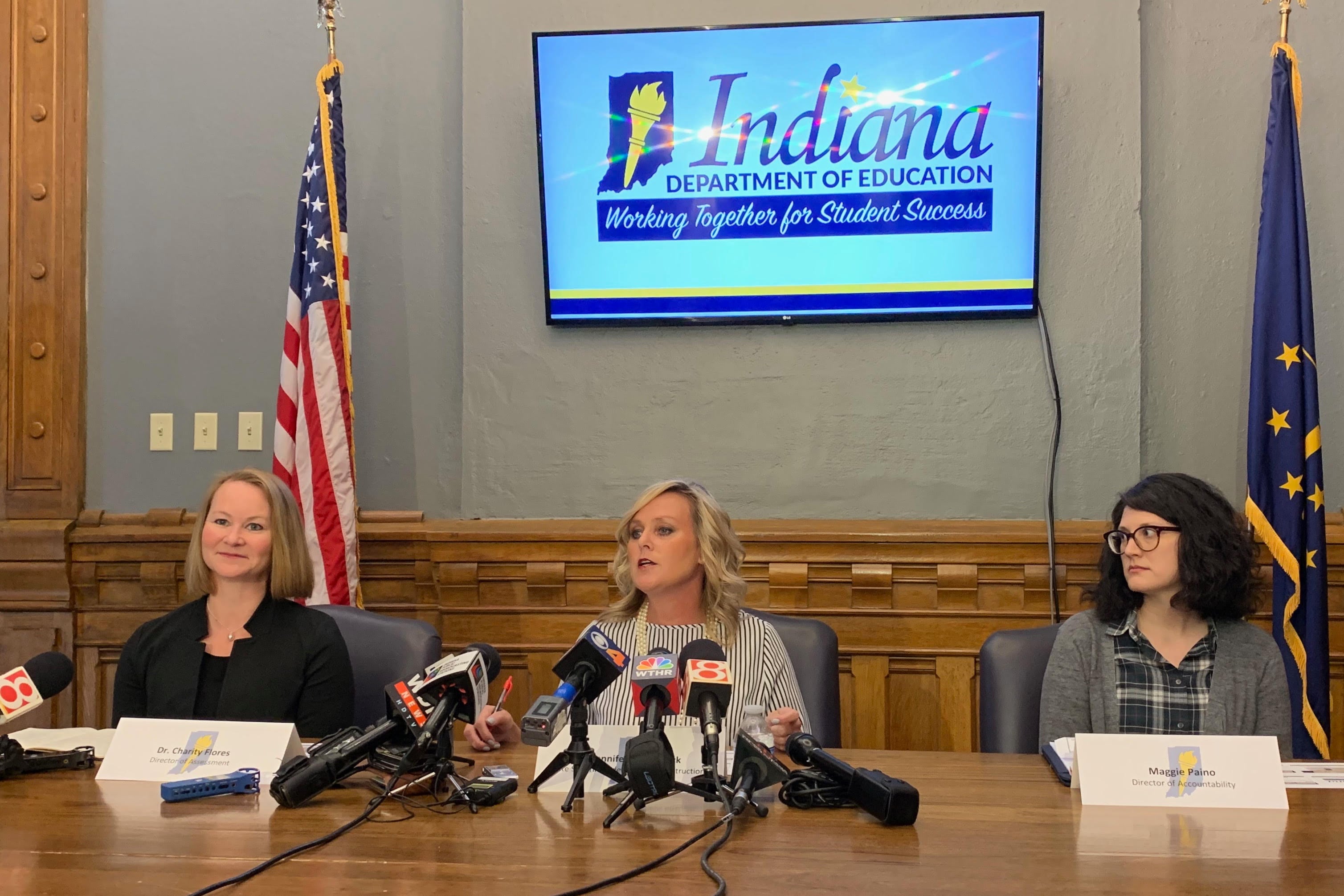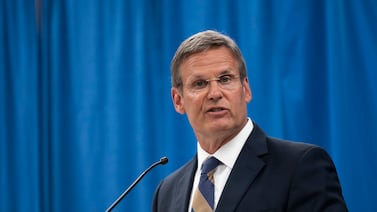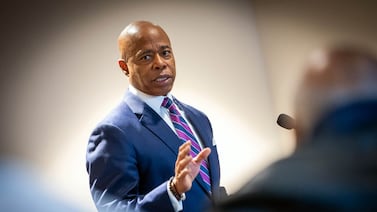Indiana is instructing public school districts to ignore controversial guidance from U.S. Secretary of Education Betsy DeVos that would have rerouted millions in federal coronavirus relief money to private schools.
In a memo to school districts dated Tuesday, Republican State Superintendent Jennifer McCormick said ignoring the advice means Indiana is following the “intent” of the federal CARES Act — to prioritize schools with high poverty. DeVos’ guidance conflicts with the federal law, said Indiana Department of Education spokesperson Adam Baker.
“The guidance issued by the [U.S.] Department of Education is just that, guidance,” said the Indiana Attorney General’s Office, according to the memo.
Last week, DeVos instructed districts to distribute resources to private schools based on their total enrollments — an idea that faced swift pushback from public school advocates. The guidance appeared to conflict with a straightforward reading of the law, which instructed money to be distributed in the “same manner” as under the federal Title I program that supports low-income students. Indiana, like many states, had already directed districts to distribute funding based on the number of low-income students.
That difference would have tripled the amount of Indiana’s $215 million federal relief that flows to private schools — from a combined $4.9 million statewide to $15.4 million.
“States all across the nation are asking for clarity and scratching their heads at why this occurred,” Baker said in an email Monday. “The formula is of concern, and one with which we clearly disagree.”
While other states have voiced their opposition, Indiana appears to be among the first to formally reject the idea. The U.S. Department of Education did not immediately respond to questions from Chalkbeat on Tuesday.
Previously, department spokesperson Angela Morabito said only considering low-income students in private schools when distributing funding “would be placing non-public school students and teachers at a disadvantage that Congress did not intend because CARES Act services for public school students are not so limited.”
John Elcesser, executive director of the Indiana Non-Public Education Association, argued that DeVos’ interpretation was appropriate because the money was meant to provide emergency relief to schools, not specifically to help with programming for low-income students.
“We would contend ... that the intent would be that as many schools as possible and as many students as possible would benefit from this program,” he said. “All schools to some degree have been impacted by the COVID virus.”
But public school officials argued the guidance would funnel precious resources to wealthy private schools while districts struggle to provide remote learning basics such as computers and free meals. Federal money for public districts will be distributed based on poverty levels – not based on total enrollment — therefore targeting support to low-income families.
“We are happy to share the funding, just like we always do,” said Fort Wayne Schools spokesperson Krista Stockman, “but to base their distribution on something different than how we are receiving it, it just seems really unfair.”
Stockman said district leaders in Fort Wayne are planning to use the one-time funding boost to purchase devices for students in the fall and help cover the unexpected cost of mailing paper packets of schoolwork to thousands of students.
The district of 29,000 students is expecting to receive $10.2 million and redirect about $1.2 million to pay for services to private schools in the city. Under DeVos’ guidance, the resources redirected to private schools likely would have doubled, Stockman said. There are more than 30 private schools within the district’s boundaries.
More than half of Indiana’s nearly 300 districts weren’t affected by the conflicting instructions because they don’t have a private school in their area, according to the state education department. But at least 88 districts do have private schools nearby, and for them the stakes are high.
“It would just be one more hit that we would be taking,” Stockman said.
The assumption that all private schools serve only wealthy students and therefore don’t need as much federal aid is off-base, said Scecina Memorial High School president Joe Therber. The Catholic school in Indianapolis is facing similar challenges to public districts.
More than half of the school’s 400 students qualify for free or reduced price meals, a common measure of poverty. Scecina is providing five days of pre-packaged breakfasts and lunches for students in need and working to help a handful of families secure internet service so their children can participate in e-learning. Some students have picked up part-time jobs after their parents were laid off, Therber said.
For a smaller school, the boost from DeVos’ method could make a significant difference, Therber said, although he said he isn’t sure how much money for services the school would have been granted. They plan to use the emergency relief to increase crisis counseling for students and provide more resources for English language learners.
“Hopefully we can all have the outlook of every student counts, no matter what school he or she attends,” Therber said. “We embrace a diversity of students… we are not an exclusive organization for only one tier of society.”
This appears to be DeVos’ latest attempt to use the pandemic to further her educational philosophy, which favors private school choice and alternatives to traditional public schools. Last month, she announced she will use $180 million in federal coronavirus relief earmarked for the hardest-hit states to create voucher-like grants for parents and to expand virtual education.
In response, a growing number of national advocacy groups are calling on districts and states to ignore the guidance while they push DeVos to reconsider. House Democrats have proposed legislation that in part aims to nullify the guidance.
“This continues Secretary of Education DeVos’ plan to rid the country of public schools and her continued assault of public schools,” said Indiana State Teachers Association president Keith Gambill. “We’re simply creating a greater difference for our students of poverty and putting them in a position where they are going to fall further and further behind.”
In the meantime, McCormick has continued to caution Indiana districts against relying too heavily on federal relief.
“I have made it very clear I would be cautious with that money right now for many different reasons,” McCormick said last week during a webinar for school leaders. “And this is one of them.”








